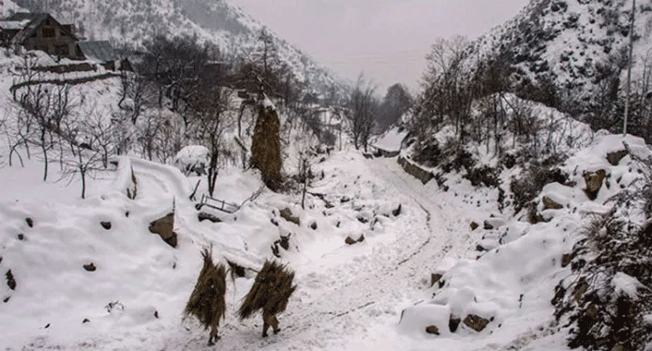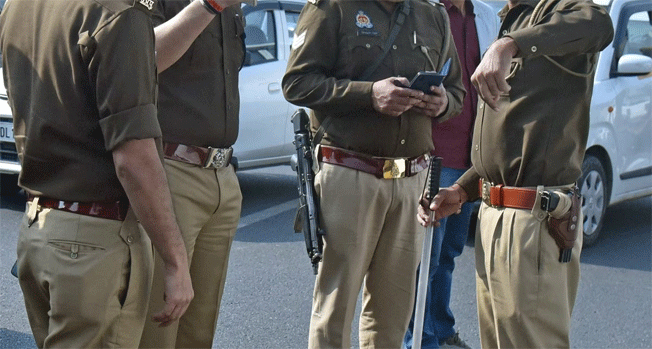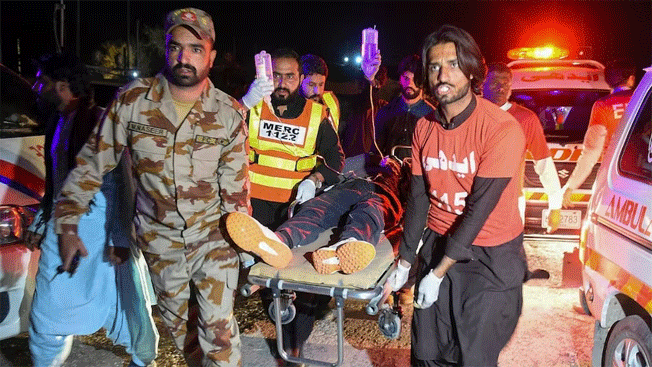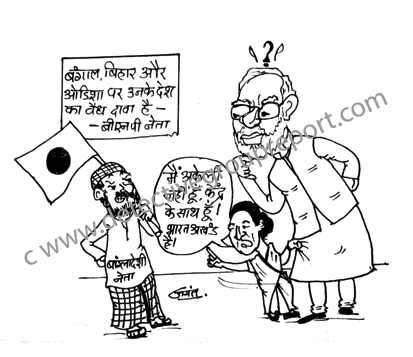There are obvious parallels to be drawn, but also dissimilarities. The BJP lacks a regional leader with sufficient weight to challenge Mamata Banerjee.15 hours ago | Shikha MukerjeeMamata Banerjee at a protest rally in West Bengal. Credit: PTIMamata Banerjee at a protest rally in West Bengal. Credit: PTIAs a consequence of the cliffhanger in Bihar assembly elections and the performance of the Bharatiya Janata Party (BJP) vis-à-vis its adversaries of the constituent parties and the idea of Mahagathbandhan, there will be repercussions in West Bengal, starting now. The BJP will harvest its experiences in Bihar to fine-tune its strategy and campaign in West Bengal.No political party in the country, and especially in West Bengal, is going to miss the significance of the plus 12% swing away from the National Democratic Alliance (NDA) led by the BJP in Bihar in the just concluded elections compared to its popularity in 2019. In the Lok Sabha elections, the BJP won all the 17 seats it contested and by the logic of expectations, it could have assumed that it would win all the 110 seats it contested in the assembly elections. That did not happen. The BJP’s tally is 74 and it is not even the party with the highest number of seats in the 243-member Bihar assembly. The Rashtriya Janata Dal (RJD) led by Tejashwi Yadav won more; it won 75 seats, making it the bigger party with more votes and more heft (although the latter did contest more seats).The numbers Game -The BJP is certainly going to need to work out what has happened between 2019, when it was the most popular and most powerful party in India and now, when voters in five state elections – Maharashtra, Haryana, Jharkhand, Delhi and Bihar – have shown serious disapproval by shifting their votes to rivals and alternatives. The overall swing away from the BJP in the five state assembly elections is of the magnitude of 16.2%. It would be a killer punch in the guts for any other party, like for instance the Congress, which picked up 19.5% of the total votes in 2019 as against the BJP’s 37.4%.More in Politics :Nitish Kumar May Be Quiet Now, But His Compromise With BJP Rings LoudNow, Telangana HC Orders Immediate Ban on FirecrackersProtesting Gujjars Sign Pact With Rajasthan Government, but Yet to Call off StirBombay HC Orders Nanavati Doctors' Panel to Examine Varavara Rao Through Video LinkBengal: Suvendu Adhikari Openly Revolts Against TMC, Sparking Speculation About FutureULFA (I) Militant Dhrishti Rajkhowa Surrenders Near India-Bangladesh BorderVoters undergo thermal screening at a polling station before casting their votes during the second phase of Bihar assembly elections in Patna, November 3, 2020. Photo: PTIA significant decline in votes in West Bengal for the BJP, as has happened in five states, assuming that voters will more or less make choices in similar ways under similar circumstances, would pull down the party from the massive 40.25% of the votes it won in 2019, when 18 of its candidates out of a total of 42 seats in West Bengal were elected as members of parliament.It was this jump, from 10.16% votes in the state assembly elections of 2016, when it won only three seats in an assembly with 294 members, that catapulted the BJP from the third position to the principal competitor to the reigning Trinamool Congress (TMC), which has a vote share of around 44%.Its core support is, in terms of vote share, probably somewhere between 10-40% in West Bengal. A negative swing of 16%, as revealed in the five assembly elections across India, in uncertain circumstances is a high risk for BJP, which is hoping to win a two-thirds majority in the state.On a recent visit to West Bengal, Union home minister Amit Shah set a minimum seat count of 200 for the party in 2021; he added that two-thirds of the seats in the 294-member assembly was his target.A leadership “face” in regional politicsAnd, then there is the other disadvantage for the party in West Bengal; there is no credible chief ministerial “face”. The formula of Prime Minister Narendra Modi as the “face” of the BJP in states where the party has a serious deficit of leadership, especially a clear and popular chief ministerial candidate, probably needs revision in the aftermath of Bihar. Having projected Nitish Kumar as the “face of the NDA,” the complicated dance that the BJP embarked upon by cutting the connection in Bihar with the Chirag Paswan-led Lok Janashakti Party may have worked out as too confusing for many voters.As a leader, Mamata Banerjee is not just a face in West Bengal. She has a history of fighting her way up and then defeating the Communist Party of India (Marxist)-led Left Front that was in power for 34 uninterrupted years. Howsoever tarnished her image may be in the perception of sections of the masses, as well as of the middle class, Mamata Banerjee is a portrait that fits into the pantheon of local leaders of heroic proportions.Unlike Tejashwi Yadav is Bihar, who was a relatively untested leader and the heir to Lalu Prasad’s larger than life role in post-Mandal politics, Mamata Banerjee is a veteran of wars, some of which were lost and some of which she won. The BJP’s problem is that it does not have a credible chief ministerial candidate in West Bengal. This cannot be negated by projecting Narendra Modi as the face of the party.The BJP is not going to be a David fighting the giant Goliath, that is, the incumbent Trinamool Congress, in West Bengal. The BJP reckons itself to be the biggest and best political party in India. Up against a regional leader with deep roots and a history of popular “struggles,” the BJP may be in deeper distress than it is prepared to admit. Its tactic of poaching leaders from other parties has limited value in West Bengal, because there is no way it can poach or has poached in the past, a leader who can engage in a face-off with Mamata Banerjee.Also read: As Cracks in Bengal BJP Widen, High Command Intervenes With Organisational ChangesEye on Muslim votesIn crucial ways, the political terrain in key districts for the BJP in West Bengal, particularly in the districts bordering Bangladesh, shares similarities with the Seemanchal area of Bihar. The recent election is, therefore, an event that the BJP as much as the Trinamool Congress, as well as the Congress and the CPI(M)-led Left Front need to carefully dissect and develop a strategy that is more complicated and subtle than hammering away at “divisive” and “communal” politics, which has a declining value in terms of delivering a shock, a warning, a galvanic effect.In Bihar, as a relative newcomer, Asaduddin Owaisi’s All India Majlis-e-Ittehadul-Muslimeen (AIMIM) won five seats. These were concentrated in the east of the state, mostly in Seemanchal, which shares a border with West Bengal and is close to the international border with Bangladesh. The area has a high concentration of Muslim votes, around 33%, which is far less than the distribution of Muslim voters in West Bengal’s border districts, like Murshidabad at 66.20%, Malda at 51.30%, Uttar (North) Dinajpur at 50%, Birbhum in South Bengal at 37%, South 24 Parganas at 35.6% on the shared border with Bangladesh’s Sundarbans.Asaduddin Owaisi at an election rally in Bihar. Photo: Twitter/syedsulaiman92The emergence of AIMIM as a contender for votes in West Bengal is barely a year old. The party’s efforts have been concentrated in the districts of Murshidabad, Maldah, North Dinajpur; Owaisi, however, claimed that he was targeting “four or five” districts in the state. The parallel with Bihar is obvious. As the anti-BJP platform, the Mahagathbandhan had expected that it would be attractive as an alternative to the BJP-led NDA, after Nitish Kumar’s scramble to keep himself in power after the breakdown of the alliance with the RJD. Within the Mahagathbandhan, the RJD, the Congress and the Left, separately and collectively, are non-communal, inclusive, secular parties with varying degrees of support from minorities and Muslims.The success of AIMIM in Bihar in 2020 offers lessons for the Trinamool Congress, the Congress and the Left in West Bengal. It is not enough for Mamata Banerjee to accuse AIMIM of being on the BJP’s payroll; she has to find a way of preventing AIMIM from undermining and undercutting her support among Muslim voters. This is also what the Congress and the Left need to work on.The reason is the BJP’s enormous success in 2019, when it picked up seven of the 18 seats it won in West Bengal from the North Bengal districts, including Raiganj in Uttar Dinajpur, Maldah (North) in Maldah, Balurghat in Dakshin (South) Dinajpur – all places with heavy concentrations of Muslim voters. What makes AIMIM an entirely new factor in the politically, socially and communally polarised politics that is playing out between the BJP on the one side and the Trinamool Congress-Left on the other is its direct appeal to the Muslim voter.Should there be a shift of votes for the AIMIM – which would mean that blocks of Muslim voters that the Trinamool Congress-Left had traditionally represented will no longer be part of their support base – the BJP could wriggle its way to winning, with votes splitting at least four ways, in a significant number of seats in North Bengal and some districts of South Bengal. For Muslim voters, the shift could be a rational choice, given the uncertainties that face them whenever the Citizenship Amendment Act-National Register of Citizens is aggressively launched by the BJP, which it has promised to do soon. It could also mean a choice that is assertive of an identity as well as a way of signalling that their best bet lies within a community of believers.By its presence, the AIMIM will be a signal to Hindu voters, swayed by a mix of the BJP’s campaign and propaganda about undocumented immigrants, “love jihad”, anxieties about growing population of minorities and alleged links with global terror networks and their collective memories of Partition and deprivation and loss, that there is a need to consolidate their votes.The disaffection among Hindu voters triggered by Mamata Banerjee’s “Muslim appeasement” politics has been one of the reasons why BJP’s vote share has soared. Her recent handouts to poor Hindu purohits (priests) is perceived as a course correction. The unsubtle politics of handouts has further diminished Mamata Banerjee’s appeal, which was already dropping as a consequence of almost 10 years in power and the associated failures, corruptions and inefficiencies.Also read: Book Review: Understanding the BJP’s Rise in West BengalThe Left in Bihar versus BengalThe play-off between politics, communal sentiments and patronage affect election outcomes. In Bihar, the RJD’s tally was pared by the emergence of AIMIM and its ability to polarise voters and so creating a set of conditions where the BJP was ideally placed, with its organisational machinery to persuade voters to switch sides.The only other party that once upon a time had an organisation and machinery that paralleled the BJP’s was the CPI(M). At present, the party is neither as organised nor does it have the human resources to mobilise and counter the BJP on the one hand, the AIMIM on the other and the Trinamool Congress in general.Unlike the CPI(ML) in Bihar, which has picked up its all-time best of 11 seats, the CPI(M) in West Bengal is a ramshackle party that is afraid of contesting the 2021 elections on its own. It needs the Congress to shore up its almost totally depleted strength. To counter identity-communal politics, the Left has to be smarter, stronger and far more active than it is today in West Bengal.There are two possibilities that emerge from the Bihar elections vis-à-vis West Bengal. The fragmentation of anti-BJP votes in West Bengal creates an advantage for the BJP. The consolidation of Congress-Left votes works as a disadvantage for the BJP. And then, the fact that AIMIM undercuts every other political party, except the BJP. The strategy of all parties needs to change as much as how they campaign, because the conditions of competition have changed and Bihar election results confirm that.Shikha Mukherjee is a Kolkata-based commentator.
विविध क्षेत्र
Lessons From the Bihar Results... Upon on West Bengal
- 05 Dec 2020








